Utsubora Timeline
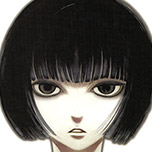
Because of the tangled nature of Utsubora's admixture of a non-linear narrative combined with its plastic surgery and lying characters, it can be difficult to keep all the threads clear. This is my attempt to give readers a foothold so they can begin understanding Nakamura's text without having little things like plot get in the way. Mouse over each event on the timeline for more information (I can't verify how well this feature will work on mobile devices, but at least on the iPad, it works if you tap each event).
Click here to return to the review.
Timeline of Significant Events
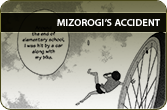
Mizorogi has the accident to which he attributes his sexual impotence, which in turn will come to signify his impotence as an author. The two don't coincide with exactitude, but his sexual impotence becomes and is meant to be read as an indicator of the damming of his creative literary spark. Just as he requires a proxy to bring his writing to others (Aki Fujima's novel is essentially Mizorogi's novel before Mizorogi even encounters it), we also see Aki Fujino (in the person of Sakura) bring Mizorogi's sexual expression to others (first to Fujika and then to Tsuji).

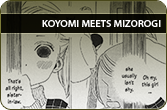
Koyomi first meets Mizorogi. For as much page-time as she gets, her part is still largely unclear to me. She's pretty clearly archetype/prototype for Mizorogi's readership, and his willingness to sacrifice her for the sake of his book echoes Fujika's statement that authors only love their own works. Beyond that? There's probably something there—I just can't yet grasp it.


Mizorogi wrote four works before drying up:
The Girl of the Red Camelia,
Cold Quail, the
Tsuyako series, and
Dear Pure-Hearted Ladies.

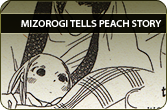
Koyomi falls for Mizorogi through the same means that all his lovers do: through his storytelling. Before his authorial impotence, his skill in winning followers was prodigious.

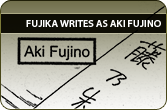
While Fujika adopts the name Aki Fujino as a pen name, Sakura sometimes uses the identity—which just makes everything way more confusing. Mizorogi rarely has any idea who the actual Aki is.


Fujika sends letters, writings, and preliminary manuscripts to Mizorogi through his publisher (and possibly through in-person home delivery, hinted at by Koyomi though she's speaking obliquely). The prolific nature of her writing (in a style which mimics his own) is perceived as mockery of his own staunched writing. It is Fujika's incessant submissions and correspondence that prompts Mizorogi to retire from publicized life. His fury at being (unintentionally) mocked leads him to view his plagiary as justifiable revenge.

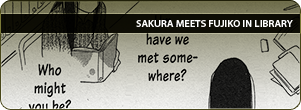
Though the timeline is not clear, Sakura becomes acquainted with Mizorogi's work sometime between their being published and reading Fujika's draft of Utsubora. It's unclear whether she was familiar with Mizorogi prior to meeting Fujika in the library. In any case, at the least, she learns of Mizorogi through reading Fujika's draft of
Utsubora, which is really Mizorogi's writing via proxy.
Sakura's real name is never discovered by the reader. The police suspect her real name
and suspect that she's the insurance embezzler.

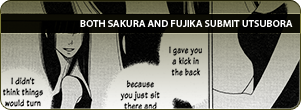
Both Fujika and Sakura submit a copy of the
Utsubora manuscript to Mizorogi's publisher. Tsuji absconds with a copy, hoping to contact Aki Fujino directly and score a coup, being the one to discover her and groom her talent. Mizorogi happens to see the other manuscript and steals it for his own use. It is unclear whether one manuscript was more "complete" than another. Mizorogi's copy, at least, is only one chapter long. This is before Sakura develops the plan for her and Fujika to become a single Mizorogi-esque character.


Mizorogi plagiarizes
Utsubora, garnering the attention of both the Fujika/Sakura pair and his own editor, Tsuji. Mizorogi's "act of vengeance" and desperation in turn prompts "Aki Fujino"''s own ruse, which ends in Fujika's suicide, which in turn propels the bulk of Nakamura's novel. Despite his plagiary, Mizorogi's use of
Utsubora is almost intended and is not objectionable on the part of either "Aki Fujino" or his own publisher.

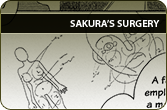
Setting their plan in motion, Sakura gets extensive reconstructive surgery. She can afford this through her embezzlement of funds from the insurance company where she worked. It is never clear exactly to what end Sakura invokes this plan. The initial stages involve meeting Mizorogi and revealing knowledge of his plagiary, beginning a relationship with the author, and then handing the reins over to Fujika—but Fujika kills herself before things can really get rolling. Nakamura's graphic novel is really rather an abortive noir.


Sakura, under the identity of Aki Fujino, meets Mizorogi at a publisher's party and reveals to him her identity as
Utsubora's true author. Sakura forces herself on Mizorogi under duress, reminding him that he stole her writing. He will do anything to retain his work (even when it's not actually his).

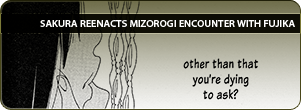
Having had a sexual encounter with Mizorogi, Sakura returns to Fujika's apartment and reenacts that encounter with Fujika—bringing her into an encounter with the author via proxy. She will later do the same (even echoing her words) for Tsuji, who confusedly loves Mizorogi in the same way that Koyomi and Fujika do (because of his writing).

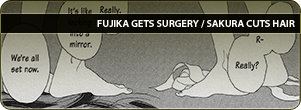
Fujika has surgery to become identical to Sakura so that she might take over the Aki Fujino identity pioneered by Sakura. Even as the bandages fall from Fujika's face, Sakura cuts her own hair, giving up the identity of Aki Fujino so that Fujika might be able to take over where Sakura left off.


Fujika, as Aki Fujino, has a single romantic interlude with Mizorogi (in the dark), which then becomes the catalyst for her suicidal action. Mizorogi notices something different (Fujika's body temperature, by which I think we should presume also he's referring to the relative heat of her passion—simply because it seems ridiculous to think that people have stable surface temperatures).

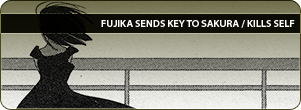
Fujika sends a key to Sakura, a key to an apartment high-rise in which the remainder of her
Utsubora manuscript rests. Then she kills herself in order that she might become a character in Mizorogi's work, eternal and undying. She also kills herself to inspire Mizorogi's greatest work.


















































